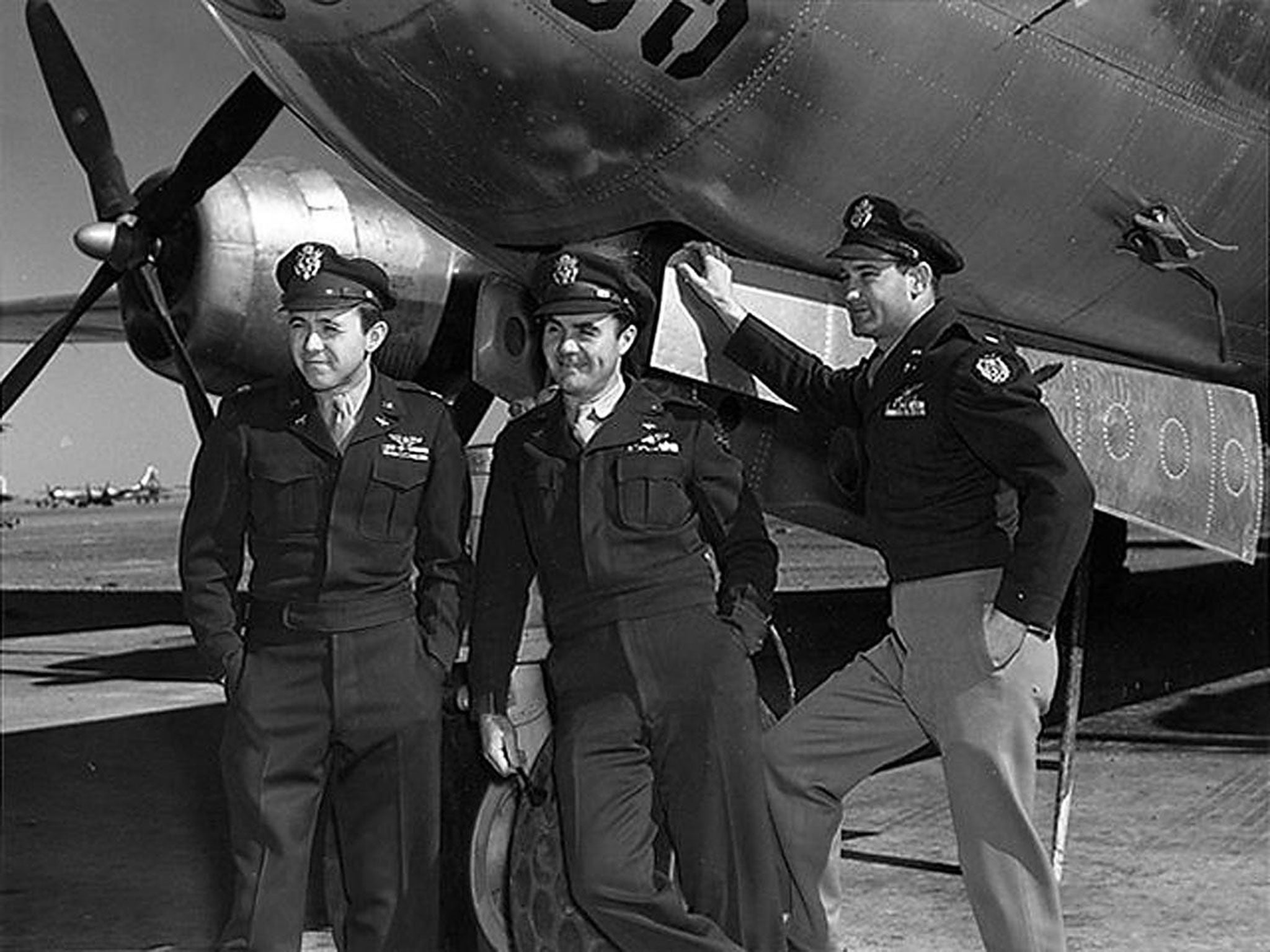Major Theodore Van Kirk: Air force navigator who became last surviving member of crew that dropped the atomic bomb on Hiroshima

Theodore "Dutch" Van Kirk was the last surviving member of the crew that dropped an atomic bomb on Hiroshima, hastening the end of the Second World War and forcing the world into the atomic age. He flew 58 bombing missions, but it was a single mission in the Pacific that secured him a place in history.
He was 24 when he served as navigator on the "Enola Gay", the B-29 Superfortress that dropped an atomic bomb over Hiroshima on 6 August 1945. He was teamed with the pilot, Commander Paul Tibbets, bombardier Tom Ferebee and flight engineer Wyatt Duzenbury in Tibbets' fledgling 509th Composite Bomb Group for Special Mission No 13. The mission went perfectly, Van Kirk recalled in 2005. He guided the bomber through the night sky only 15 seconds behind schedule, he said. As the 9,000lb bomb nicknamed "Little Boy" fell toward the sleeping city, he and his crewmates hoped to escape with their lives.
They didn't know whether the bomb would actually work and, if it did, whether its shockwaves would rip their plane to shreds. They counted down the 43 seconds they had been told it would take for detonation, but heard nothing. "I think everybody in the plane concluded it was a dud," said Van Kirk. "It seemed a lot longer than 43 seconds." Then came a bright flash. Then two shock waves.
The blast and its after-effects killed 140,000 in Hiroshima, leaving only one structure standing in the vicinity of the blast, according to Unesco. "After the bomb exploded and we saw the devastation, you could only draw one conclusion: The war was over," Van Kirk said in a 2005 interview with Der Spiegel magazine. "We couldn't make any visual observation of Hiroshima because it was all covered with smoke and dust, but you could see the energy that was released."
Van Kirk, a major in the US Army Air Corps, said Tibbets had cyanide tablets for all crew members in case the mission didn't go according to plan. Three days after Hiroshima, a second bomb was dropped, on Nagasaki, claiming another 80,000 lives. Six days after the Nagasaki bombing, Japan surrendered.
The "Enola Gay" crew became involved in the top-secret Manhattan Project, the team led by physicist Robert Oppenheimer in Los Alamos, New Mexico, to develop the atomic bomb. On the advice of Oppenheimer, Tibbets was required to steer the plane at an angle of 159 degrees in either direction as fast as possible after the bomb's release to have the best chance of survival and avoid the shockwaves from the explosion 10 miles away. After observing the destruction and taking photographs for several minutes, they escaped to safety.
"Do I regret what we did that day? No, sir, I do not," Van Kirk said in 2010. "I have never apologised for what we did to Hiroshima and I never will. Our mission was to end the Second World War, simple as that." He believed the bombings were necessary because they eliminated the need for an Allied land invasion that could have cost more lives: "I honestly believe the use of the atomic bomb saved lives in the long run. There were a lot of lives saved. Most of the lives saved were Japanese".
But his exploits also made him wary of war. "The whole World War II experience shows that wars don't settle anything," he said. "And atomic weapons don't settle anything. I personally think there shouldn't be any atomic bombs in the world – I'd like to see them all abolished. But if anyone has one, I want to have one more than my enemy."
Born in 1921, in Northumberland, Pennsylvania, Van Kirk was the son of a coalminer. He helped his father by rowing flats of coal up and down the Susquehanna River. "I had practically a Huckleberry Finn life type of thing," he recalled. "I might say I was a river rat."
VanKirk stayed on with the military for a year after the war ended then went to college, graduated in chemical engineering and signed on with DuPont, where he stayed until he retired in 1985. He later moved from California to the Atlanta area to be near his daughter.
Like many Second World War veterans, Van Kirk didn't talk much about his service until much later in his life, when he spoke to school groups, "I didn't even find out that he was on that mission until I was 10 years old and read some old news clippings in my grandmother's attic," his son Tom Van Kirk said. "I know he was recognised as a war hero, but we just knew him as a great father."
The "Enola Gay" was restored and is on display at the Smithsonian Institution's National Air and Space Museum in Chantilly, Virginia, near Washington Dulles International Airport Van Kirk's military career was chronicled in a 2012 book, My True Course, by Suzanne Dietz.
KATE BRUMBACK AND DAVID HENRY
Theodore VanKirk, air force navigator and chemical engineer: born Northumberland, Pennsylvania 27 February 1921; married (two daughters and two sons); died Stone Mountain, Georgia 28 July 2014.
Subscribe to Independent Premium to bookmark this article
Want to bookmark your favourite articles and stories to read or reference later? Start your Independent Premium subscription today.

Join our commenting forum
Join thought-provoking conversations, follow other Independent readers and see their replies